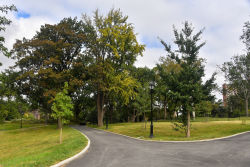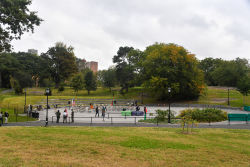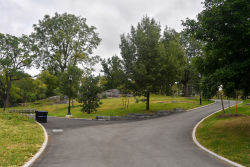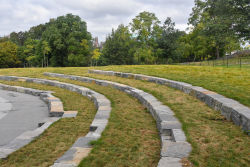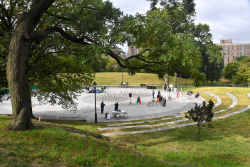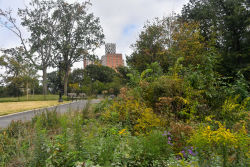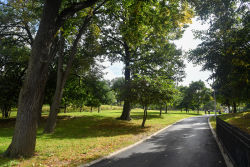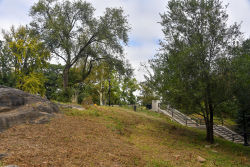St. Mary's Park
St. Mary’s Park
St. Mary’s Park, one of the six original parks in the Bronx, spans the history of the borough from the settler era to urban development. The park site was once part of the estate of Jonas Bronck (1600-43), for whom the Bronx is named. During the Revolutionary War, a group of Loyalist military refugees camped here. Years later the land was held by the family of Gouverneur Morris (1752-1816), one of the authors of the U.S. Constitution. After 1857 the area was known as “Janes’ Hill” for owner Adrian Janes of Janes, Kirtland & Co. Iron Works, a local foundry that manufactured bridges for Central Park, railings for the Brooklyn Bridge, and the 8,909,200-pound dome of the U.S. Capitol in Washington, D.C.
In 1874 New York City annexed parts of the southern Bronx (formerly lower Westchester County). Seeking to create public parks in the Bronx, journalist John Mullaly (1835-1915) founded the New York Park Association in 1881. His efforts culminated in the 1884 New Parks Act and the city’s 1888-90 purchase of lands for Van Cortlandt, Claremont, Crotona, Bronx, St. Mary’s, and Pelham Bay Parks and the Moshulu, Pelham and Crotona Parkways. St. Mary’s Park was named for a Protestant Episcopal church that stood three blocks to the west until 1959.
In 1887, Mullaly described the site of St. Mary’s Park as “isolated and alone, perfect in itself, its miniature loveliness challenging comparison with the largest and fairest of its compeers.” He continued: “Its area is twenty-five acres and one-third, and within that limited space all the points that constitute the charm of a public pleasure ground are to be found in abundance: wood and water, trees and shrubs, hill and valley, barren rocks and emerald meadows; and all these so disposed that one form of beauty heightens the other by contrast.” Adding to nature’s design, architects arranged winding paths and roads, benches, fences, trees, shrubs, flowers, and buildings (such as a concert stand). In 1903, Parks granted the New York Central Railroad permission to lay tracks underneath the park. The line was eventually abandoned, and the 1.2 acres occupied by the tracks were returned to the park in 1912; an additional .8 acre was added in 1968.
The park led the way in the development of recreation programs in the Bronx. The borough’s first playground opened in St. Mary’s Park in 1914. At this time, the park also had a baseball diamond, two tennis courts, and a children’s farm garden. In response to rapid population growth and residential construction in the neighborhood, three additional playgrounds opened in the park between 1938 and 1941. After World War II, Parks Commissioner Robert Moses inaugurated a city-wide recreation program to provide places to play and socialize in cold weather months. New York’s first full-service, indoor recreation center opened at St. Mary’s in 1951. Designed by the architectural firm of Brown, Lawford, and Forbes, the building housed an indoor swimming pool, gymnasium, locker and shower rooms, and meeting rooms for classes and community programs. Murals of Marvel Comics superheroes were painted in the center in the early 1970s and repainted in 1991.
In 1996, a quarter-mile fitness loop and two additional tennis courts were installed in St. Mary’s Park with city funds allocated by the City Council. In 2006, Parks completed the installation of synthetic turf at Saint Mary’s Park.
Check out your park's Vital Signs
Clean & Safe
Green & Resilient
Empowered & Engaged Users
Share your feedback or learn more about how this park is part of a
Vital Park System

Know Before You Go
Anticipated Completion: Fall 2023


